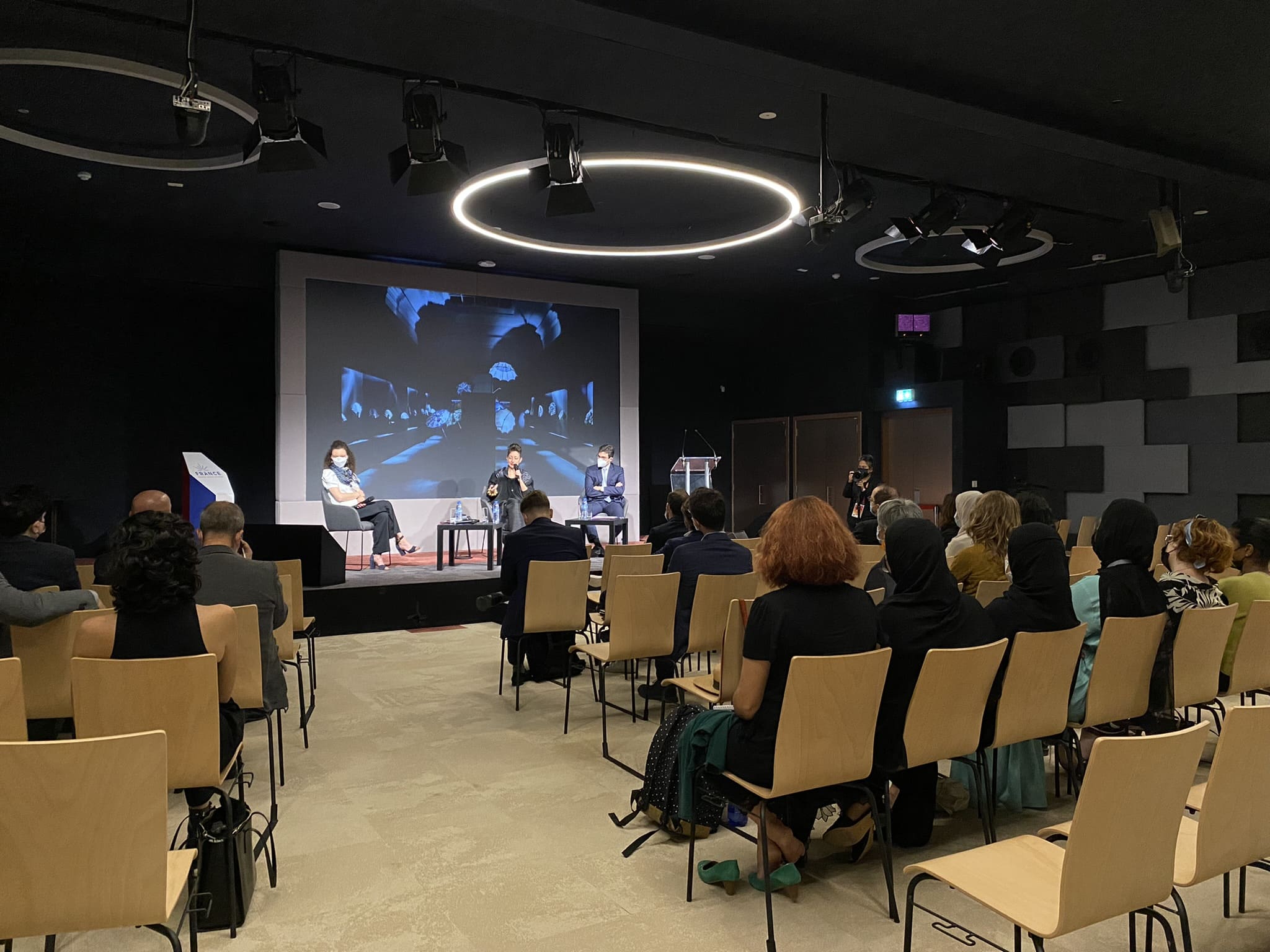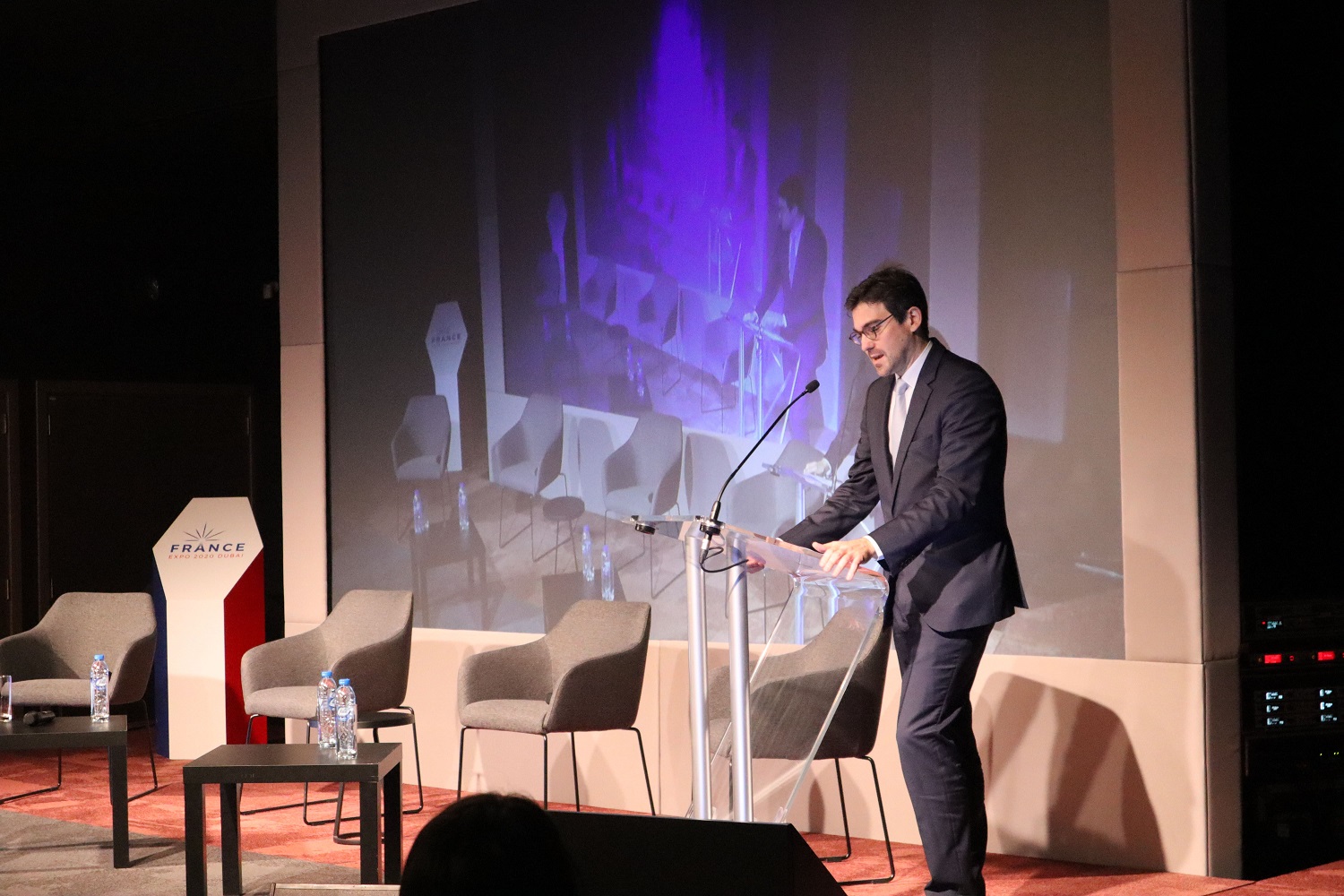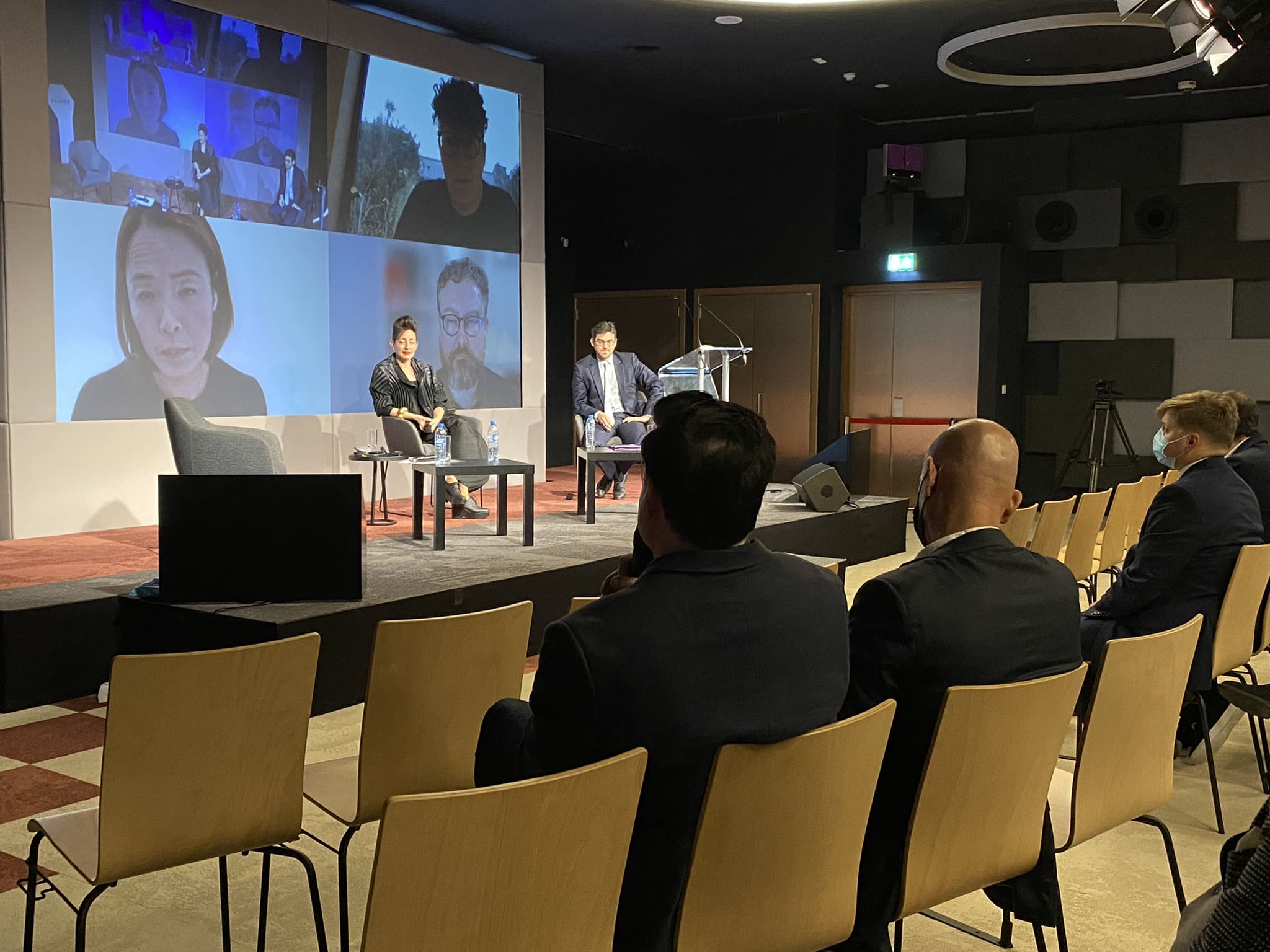What is at stake when creating a museum?
Most of the museum projects have become more complex and larger in recent years. Clients have been pushing design and content boundaries, while designers have been challenging the limits of buildability. Programs have been getting fast-tracked, visitors’ expectations and customers’ demand for cutting-edge experiences seem to be rising day by day. To deliver such a coherent and complete experience to their audience, upcoming museum projects must rely on an integrative approach and clearly state their vision.
As part of the event Les Rencontres by France Muséums organized on January 15th, 2022 at the France Pavilion Expo 2020 Dubai, France Muséums, in partnership with Chargeurs Museum Solutions, hosted a masterclass that questioned the necessity for each discipline to work closely from the very beginning of a project in order to capture the museum visitor experience as a whole and deliver one single and coherent message to visitors.
Here is an overview of the discussion that France Muséums provides, as a museum consulting company.
EXPERTS
Moderated by Carol See, Sales and Marketing Director at Chargeurs Museum Solutions and Aude Viart, Strategy and Planning Manager
Facilitator: Julie Gloannec, Training Officer at France Muséums a
- Lina Ghotmeh, Architect
- Peter Karn, Creative Director of MET Studio
- Robin Rochford, Director of Design PM
- Stéphane Roisin, Deputy Chief Executive Officer of France Muséums
CHANGING TIMES, CHANGING AUDIENCES
A museum is strongly rooted in its social, geographic, and cultural context. Thus, museums are particularly sensitive to the rapid mutations that societies today face across the globe: it is the specificity of museums to not just be affected by these changes, looking at them as a spectator, but to respond to them as a key actor of our societies. The process of reviving and reshaping museums undoubtedly brings experts new challenges. They must demonstrate their capacity to turn away from traditional, didactic visits to create engaging, memorable experiences.
In recent years, museums have introduced many digital installations and mediation devices in their galleries to interact with the audience. In addition to enriching the visit, these innovative tools encourage a participatory approach, allowing visitors to engage with the artworks by sharing their own knowledge, experience, and thoughts, and help form the required emotional bridge between the narrative and the audience. However, technology alone wouldn’t be enough to make the magic happen and should surely not be seen as a need just for the sake of technology. Any device must be designed based on the museum’s vision, aligned with the institutional message and the audience profile. It would be a mistake to think that new technologies are used to replace traditional approaches. High-tech and low-tech methods complement one another to ensure the consistency of visitor pathways and experiences.
Today’s audiences are seeking inspiring moments and are calling for a renewed look at history: wider, more inclusive, on which to build a brighter future. Therefore, museums must welcome and represent a larger range of identities, including minorities and the young generation (that have long been underrepresented in their premises), and must become platforms for interactions and cultural exchanges.
Way more than an architectural signature, a museum building has a role to play at a territorial scale and must be firmly anchored in its environment. Having an environmental, historical, and socially sound building ensures the project’s sustainability, which has surely become a major argument for audiences.
RECIPE FOR A SUCCESSFUL MUSEUM PROJECT
The way we live, work, and engage with each other has radically changed, and this applies to the entire process behind the museum strategic planning, from museum conception to museum opening.The recipe for a successful museum project contains specific ingredients to be incorporated from the conception phase, such as a carefully calibrated brief and a museum project management that emphasizes a collaborative and integrative approach to the project. Museum experts therefore need to update their work methods accordingly, however the right balance is not easy to find.
Surely, the client’s brief stands as the foundation stone of the project. However, one should be careful not to trip over it. As such, it should be regarded as a “statement of interest”, based on which the various expertise involved in the project will come on board, and as a basis for dialogue to be thoughtfully challenged. Throughout the project’s lifecycle, the brief serves as a common thread for the project team to stay true to its “essence” and “emotional spirit”. This document contains a set of predefined parameters that serve as a guideline but, in some ways, also constitute limitations to innovate within. A critical review of the brief is fundamental so that it can evolve, when necessary, as the project progresses: flexibility and adaptability remain the hallmarks of the project team.
As early in the project cycle as possible, all expertise must actively collaborate and exchange in order to avoid any disconnections, that would ultimately be felt by visitors themselves. To achieve this, a clear line of communication and an effective chain of command must be established. All stakeholders, including creatives, architects, designers, project managers, museum consultants, and technical teams, work together to articulate the spine of the museum, its narrative, and ensure a solid connection between the artworks, the building and the visitors.
POETICS OF THE MUSEUM EXPERIENCE
A museum is the expression of a zeitgeist,[1] brought into being by the will of a project owner and the expertise of a project team. Consequently, far from being a static concept, the museum is in constant evolution and is, as such, characterized by its openness. It is, thus, prone to changes, including those brought on by any major historical event.
The museum stands today as a place of healing, dedicated to reconnecting a community with its environment, nature and history, but also with each other. Restaurants, bookstores, forums, and other places that are just as integral to what a museum is as an exhibition space, are ideal for use in this purpose. Despite the rise in global, dematerialized communications over the past two years, going to a museum remains a physical and collective experience.
The museum experience is about « building memories within places that allow these emotional connections to stories that people remember and then learn from » (Peter Karn, Creative director of MET Studio). A museum is, in essence, a storytelling matrix that can have a « transformative effect » on the perceptions of those who go through it. In some ways, walking out of a museum would be similar to emerging from a vivid dream that would, for quite some time, tint the world with its colours and leave its shallow but lasting imprint on one’s everyday life.
Museum makers and museum consulting experts such as France Muséums thus hold the great responsibility of creating and offering visitors a meaningful, life-changing, experience.
[1] The defining spirit or mood of a particular period of history as shown by the ideas and beliefs of the time (Oxford dictionnary)



